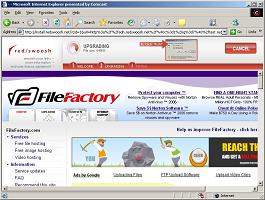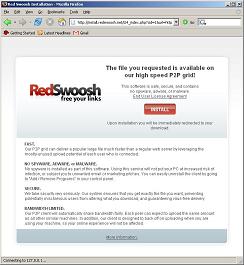I’ve tried to keep all of my posts biz-related, but there’s one Thailand story that needs to be told, what a friend of mine calls a “Life Story.” Nothing big, but one of those things you’ll never forget, and something to tell the grandkids.
We’re on our way up to Bangkok from Krabi, Thailand, nearing the end of our trip, and getting a last week in of work before we head back to the states.
We’re getting out of town right as monsoon season starts, and I’m telling you, those Vietnam movies that seem unrealistic where it’s just raining like somebody’s pouring water from a bucket. .. they’re legit. We’re about ready to get onto our ghetto train, and the air is simply turning into water. Tom and I are carrying our laptops, and scared out of our minds that our most important assets are short-circuiting as we run to the sleeper car. We make it in the train right as it starts to leave the station. An old Thai lady is sitting in my seat smiling. David tells me not to go aggro or cause an awkward scene. . .so I don’t.
One constant of this trip, wherever we go, whatever we are doing is that we have our laptops out and are incessantly looking for AC power to plug in. We have a power-strip, and don’t hesitate to lay it out anywhere and everybody plug in. On this train, I have power-finding duty. Walking up and down the train, I make it to the cargo area where I’m abruptly confronted by the conductor half naked in a towel, like he just took a shower, with shaving cream on his face yelling at me to get out (in Thai of course). Ummm, who’s driving the train?. . . . nevermind, don’t want to know the answer. No outlet, no power, nothing, nada. Meanwhile, Tom, our resident Aussie-DJ, software dev, and DIY electrical engineer is trying to take apart the lights in the train to turn into a power source. The police walking up and down the train look at us in a way that says, “Do you really want to spend the night in a Thai jail?”
Finally, I make my way to the other end of the train, where there is a diner car. After ultra-cheap meals all throughout Thailand, I was actually upset with the menu prices, almost a $1.50. But all of a sudden it got real quiet, I see this glowing light in the corner, and a soothing catholic choir sounding background noise of awwhhhhhhh (you know the sound I’m talking about). There it was, the AC outlet. Now forget about the glowing and the religious moment I had there, this outlet is tucked away in a place in this diner car people don’t go, and this outlet is GHET - TOE, looking shady, like if you plug into it, the train will derail or something. Nahhh. . .it will be fine.
I get the guys, we make our way to the diner car. We order some food as a sign of supporting the local diner car economy. There are 4 police officers in the diner car and a lot of people that look at us somewhat suspiciously as the only farangs (aka, white-boys) that made it to this side of the train. We’re eating, looking around, trying to figure out how to get us some power. . .
Breakthrough. David has the idea that we buy everybody in the diner car including the police and staff, a round of beers. At only $0.50 or so a beer, it’s really no skin off our backs, and if it gets us power to work for the rest of the night, then it’s *way* worth it.
So the locals were very pleased with the generous farang outsiders and the general mood in the diner car warms up precipitously. The police were the first to pop the tops and start guzzling. Suddenly a screeching, chalkboard-scratching sound starts squealing from the stereo they have set up in the diner car, like some RIAA-induced “You are a pirate, we have jacked your music up, so that you will no longer be a pirate and conform”. Let me tell you, that anti-piracy crap doesn’t work in Thailand. They make their way through the scratches like nothing happened. But we had to do something, and this could be our opportunity to hit a couple birds with one stone.
We offer up Tom, our resident Aussie-DJ (new Swoosh team member) for DJ services-they call him DJ Asbestos back in Australia. He lights up his laptop, plugs the stereo into his audio out, and starts getting this train rocking and rolling. Now, this isn’t entirely new for us, we’ve pulled out DJ Asbestos in a number of occasions during this trip to enhance the nightlife and barter with the locals. This was no different. The moment he lit his laptop up, we quickly whipped out the power strip, laid it on the side of the car, we all plugged in, and we were on our way to a productive Swoosh evening. The locals were rocking, Tom was able to get his software development on after setting up a long playlist, David was cranking on some code, though harassed by an old-drunk thai man who was a bit scary, and I was jamming on our new site layout.
The old man was getting pretty aggressive, so we tried to mollify him with a couple more beers. . . no luck. When the locals guessed that he was going to be the buzz kill, the police escorted him back to his seat. A few local thai girls were into the tunes and into this strange scene, were practicing their english with us “I think you are beautiful”. . . “My heart pounds for you”, weird . No, they weren’t lady-boys, and no we weren’t interested, but they were good looking and yeah, it was cool to be rock stars, at least for a night.
The night got a bit more underway, and one of the diner employees just started emptying beers into buckets of ice, and just made the rounds back and forth throughout the diner car. Even when we were inundated with one of the deadly plagues, thousands of 2 inch flying ants get sucked into our car, this guy keeps pouring. He kept filling them up, 10 straws in each of them, making the rounds while we hammered away on our keyboards.
As we split through the remote jungles of Thailand, we filled the locals with good cheer, filled the air with good tunes, good fun, and one hell of a Life Story.
- chief swoosher
 RSS Feed
RSS Feed


